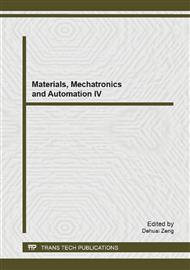p.3
p.7
p.13
p.18
p.24
p.29
p.33
p.38
p.44
Morphological Study of Bacterial Cellulose (BC)/Polyvinil Alcohol (PVA) Nanocomposite as Bone Scaffold
Abstract:
This research describes morphological aspect of BC-PVA nanocomposite asscaffold for bone tissue that was synthesized by adding PVA to Gluconacetobacterxylinus fermentation medium. PVA concentrationswere varied as 0,3,6,9, and 12 % (w/v) of the medium. The culture was agitated with magnetic stirrer for 28 days. Freeze drying was then conducted to obtain dry BC/PVA nanocomposite. Some nanocomposite samples subjected to sonication treatments. The morphology of BC-PVA nanocomposite was examined by Scanning Electron Microscope (SEM) whileits surface area and pore characteristic were determined by nitrogen adsorption of BJH method (BET device). SEM images showed the smallest fiber diameter of approximately 35 nm andnanocomposite surface that was smoother with higher PVA content in the fermentation medium. The sonicationtreatmentcould enhance nanocomposite surface area from 17,2 m2/g to 72,7 m2/g for pure BC sample and from 9,9 m2/g to 14,3 m2/g for 12% PVA sample. BC/PVA nanocompisite had smaller pore diameter than pure BC and its size increased with more PVA content in the fermentation medium.PVA could modify BC morphology bymakinga hindrance on cellulose nanofiber sothat fiber agglomeration could be avoided andthe sonicationtreatmentshowedto enhance this phenomena.
Info:
Periodical:
Pages:
24-28
Citation:
Online since:
June 2014
Authors:
Keywords:
Price:
Сopyright:
© 2014 Trans Tech Publications Ltd. All Rights Reserved
Share:
Citation:


